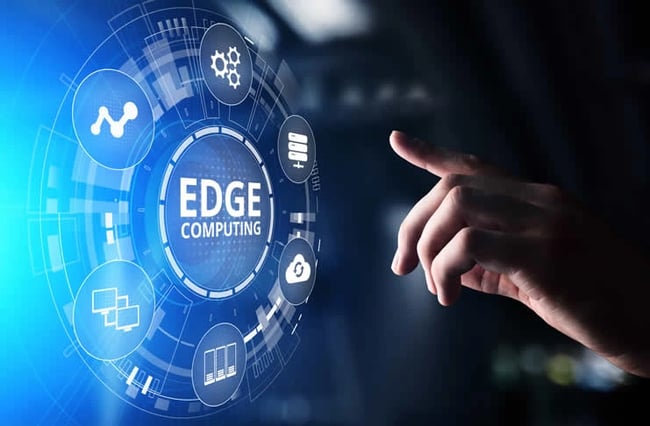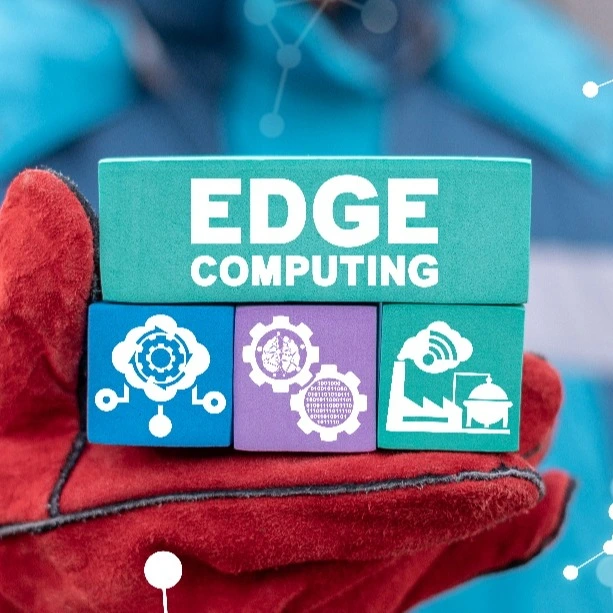IoT plays a major role in workplace environments, and experts predict that by the year 2025, there will be 41.6 billion devices connected to IoT. An important component of IoT is edge computing. Edge computing is necessary for devices to transfer information wirelessly and quickly. If everyone sends all of their information to the cloud simultaneously, process times will slow down. That is why edge computing is becoming an attractive alternative.

What is Edge Computing?
Edge computing is a form of data processing near the originating source. This process experiences little to no delay. It processes data at the edge of the network. Edge computing is necessary for situations where the fastest response time is needed. Since the data source is close to the data center in edge computing, it experiences lower latency issues and lower bandwidth costs.
When edge computing is used with asset tracking and monitoring systems, end users can receive the information they need quickly. This is vital when needing to locate or monitor a business-critical asset in order to continue with daily workplace processes.
Edge Computing and 5G
5G is changing the landscape of computing, especially edge computing. This faster cellular technology sends real-time data faster when paired with edge computing. 5G and edge computing will revolutionize technology and make future innovations more powerful than ever before.
Join the AirFinder Difference!
- Innovation. Organizations can be freed up to innovate and bring more impactful products and services to market.
- Profitability. Increased profitability provides new opportunities to innovate and improve valuation.
- Digital Transformation. Discover competitive advantages, new revenue opportunities, improved customer relationships, and increased efficiency.
Benefits of Edge Computing
- Security
One of the benefits of edge computing is the security it provides. Since data is transferred so closely from its origin to its final destination, it makes it safer. Companies can have peace of mind knowing that the stored information is only held within a local network and not getting sent to a data-collecting cloud center. - Latency
As mentioned earlier, another benefit of edge computing is latency improvements. The data is processed near the edge of the device, allowing real-time speed. This crucial benefit has many applications. An example of this would be the monitoring devices on production lines. With lower latency, preventing errors during the assembly process is easier than ever. - Bandwidth
As the growth of IoT continues, the bandwidth of information going to the cloud will become overloaded. The infrastructure will be so overwhelmed that even small amounts of data will experience slower service. Edge computing bypasses this by only processing units that are locally processed. The ability to process local data near the device keeps the bandwidth small. - Cost
Companies tend to find ways to save business-related expenses, while staging ahead of the tech curve. With edge computing, companies can expect to save anywhere from 10-30% in costs and an average of 10-20% in operating costs. The reduced amount of data sent to the cloud will reduce the amount of data that the company will store on the network.
Is Edge Computing Replacing Cloud Computing?
One must understand that cloud and edge computing are not direct competitors. They are two different forms of processing, and both can be used by a company simultaneously. A company can find a perfect mixture of the two to send data to the cloud while sending real-time data to the local edge.
The Future for Edge Computing
Edge computing and 5G will allow IoT to reach new heights as the world becomes more connected by devices. Edge computing will be a great addition to the already well-established cloud computing. It will allow companies to save money and track data in real time. IoT devices will be more efficient with tracking while remaining affordable.
Asset Tracking Solution at the Edge
Link Labs utilizes edge computing with its AirFinder solution. The AirFinder platform helps companies keep track of assets and equipment with an RTLS system at an affordable price. If you think your company could benefit from an asset tracking system that utilizes edge computing, book a demo with us today!




